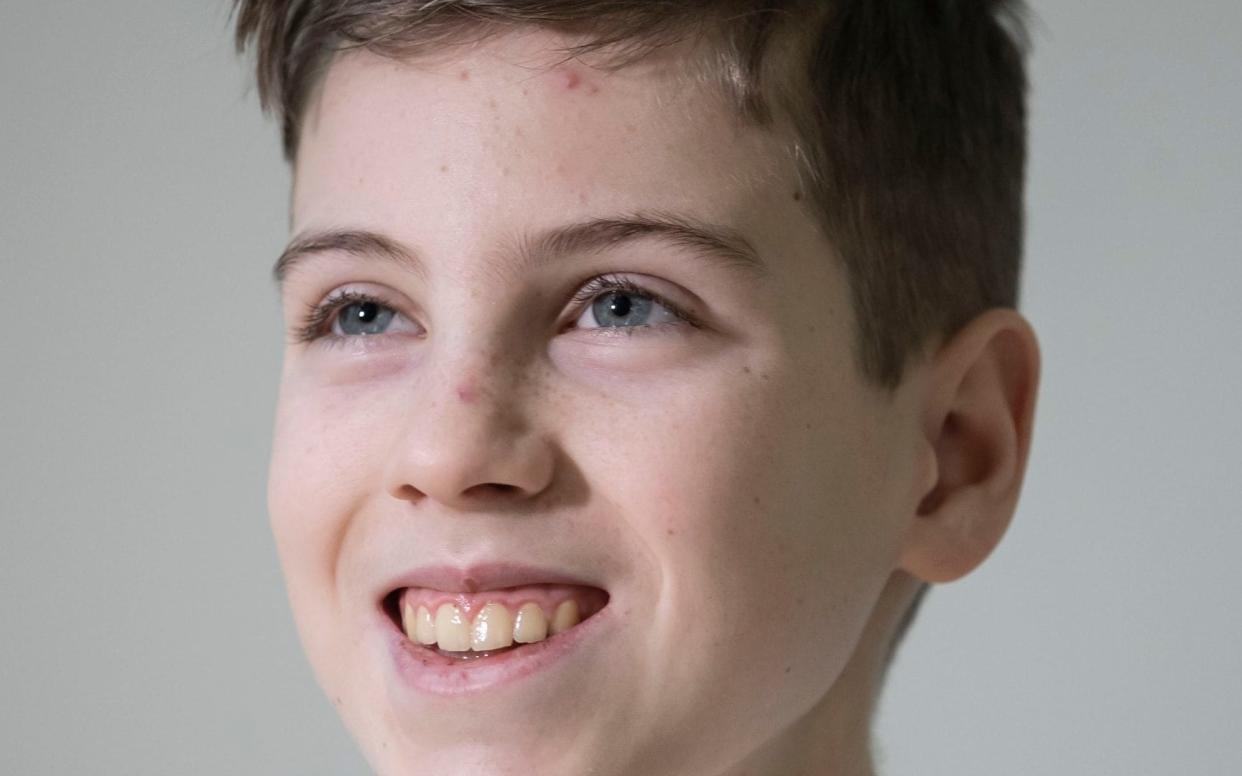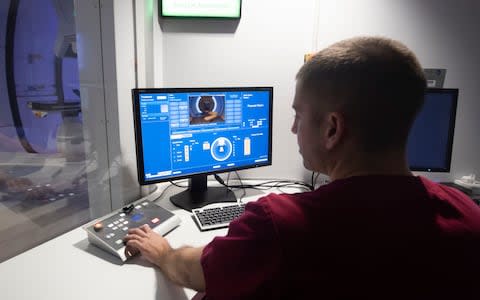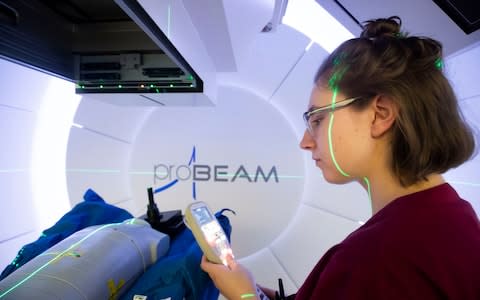Schoolboy with rare brain cancer among first to have NHS proton beam therapy in UK

A 15-year-old boy has spoken of his excitement at being among the first to have NHS proton beam therapy in the UK.
Mason Kettley, who suffers from a rare brain tumour, began treatment on Tuesday - five years after the parents of Ashya King sparked an international manhunt when they took him abroad in search of treatment.
Until last month, NHS patients were sent as far away as the US for treatment, if specialist doctors said it was required.
Now the Christie Hospital in Manchester has begun offering the highly targeted treatment, with Mason the fourth case to undergo it, and the first to speak publicly about it.
It is the first centre in the UK offering such treatment to NHS patients.

The schoolboy, who was diagnosed with a rare brain tumour in October, said his experiences at the hospital had convinced him that he wanted to train as a doctor.
The lack of proton therapy in the UK became the subject of public debate in 2014, when the parents of Ashya King, then aged five, fled the country in search of proton beam therapy because they believed the standard radiotherapy he was due to have in Southampton would harm his brain.
The child ended up receiving proton therapy in Prague, and has since been cleared of cancer.
Mason was diagnosed with the inoperable tumour after suffering headaches and failing to put on weight.
Doctors found that the tumour was growing in a critical part of his brain but could not operate due to the risk of causing blindness and damage to vital brain tissue.
Following a biopsy and an operation to insert a shunt, doctors referred Mason's case to a national panel of experts.

They decided his tumour - known as a benign pilomyxoid astrocytoma - made him a suitable candidate for proton beam therapy.
Mason, who lives with his mother Cally, step father Ryan, and four siblings - Taylor, 20, Logan, 10, Scarlett, seven, and Elijah, four - said he feels apprehensive about the treatment.
He said: "I'm a bit nervous because the machine is intimidating because of its size.
"It's a bit nerve-wracking but this is a better choice than chemo because it's more effective.
"Because of my age, (doctors) thought radiation would be a better choice.
"Their goal is to stabilise the tumour. It may shrink, but they are aiming to stabilise it."
Mason, who likes to spend his spare time on social media and watching movies, is planning on going to McDonald's once his six weeks of treatment has finished.
"I'm a fussy eater but I'll be having large fries," he said.

Because of its precision, proton beam therapy is beneficial for patients with difficult-to-treat tumours in critical areas, such as in the brain or spinal cord, and for young people whose tissues are still developing.
Consultant clinical oncologist Gillian Whitfield, who is leading Mason's care at the Christie, said: "With proton beam therapy, compared to conventional radiotherapy, there is less dose to surrounding normal tissues and less risk of permanent long-term effects of treatment.
"This is particularly important for children and teenagers with curable tumours, who will survive decades after treatment and are at much greater risk of serious long-term effects of treatment than adults.
"Mason's tumour is a low grade (slow growing) tumour with a high chance of cure.
"For Mason, in comparison to conventional radiotherapy, proton beam therapy should carry a lower risk of some important long-term side effects of treatment, particularly effects on short-term memory and learning ability and the risk over the next eight decades of the radiation causing other tumours."
Two new proton beam therapy centres have now been built at the Christie and University College London Hospital (UCLH) with £250m of Government money.
Professor Stephen Powis, medical director for the NHS in England, said: "This is a hugely exciting development for the NHS and we are delighted that we are able to provide this life-changing treatment for patients like Mason."

 Yahoo News
Yahoo News 